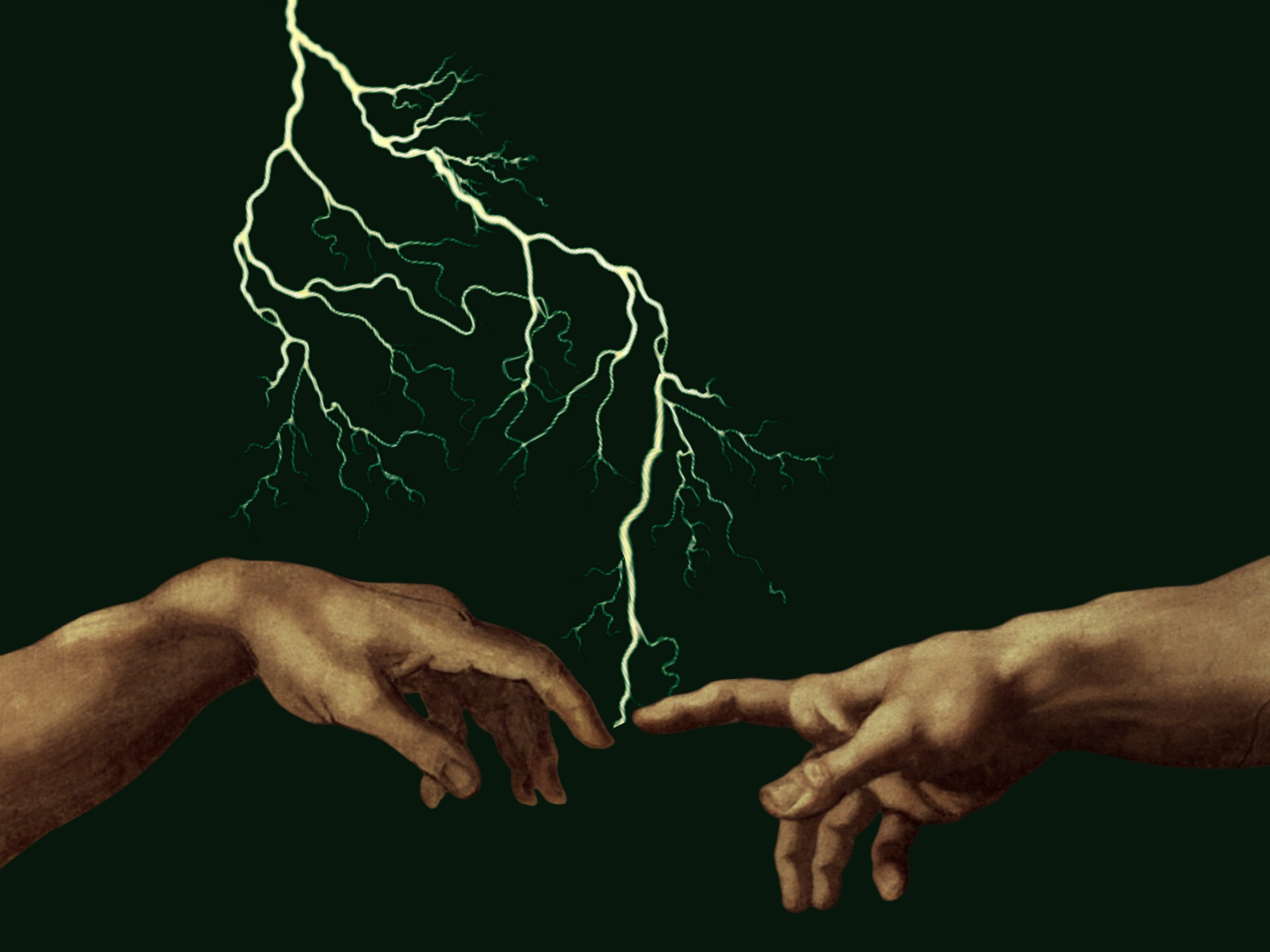It’s (Not) Alive!
Graphic by Claire Arveson
Ever since I had to read it for my senior year English class, my favorite book has been Frankenstein. You can imagine my excitement when I could finally get my grubby little paws on Guillermo del Toro’s Frankenstein to fuel my addiction.
I sat down with my popcorn and a head full of obsession over this story, expecting nothing but the best for this horror classic. However, by the end of this two and a half hour long retelling, I was throwing my hands up in anger at every damn word that was coming out of Victor’s mouth. I was angry that a story that I’ve loved for so long wasn’t being represented properly.
Now don’t get me wrong, was del Toro’s Frankenstein a technically good movie? Yes, of course it was. Was it the story of Frankenstein? Not exactly. There were just too many aspects of the movie that were changed from the book for me to recognize this movie as a classic retelling.
There’s been some talk online complaining about Jacob Elordi’s makeup and how it doesn’t “feel like Frankenstein’s monster”, but that’s not what I want to rant about today. I thought that the makeup for the creature was one of the most accurate parts of the movie. I’m not here to talk shit about any of the acting in the movie. I’m here to complain about the complete rewriting of the story that leaves the movie almost completely unrecognizable and changes the main themes of the story.
Firstly, we have to talk about Victor’s family. The most obvious change del Toro made was that Elizabeth was no longer Victor’s sister-wife. I appreciate him not making Victor marry his sister, but in doing so, he took a lot of creative liberties. Victor’s mother could no longer die from scarlet fever that she picked up from Elizabeth, del Toro decided that he would just make Victor’s abusive father kill her instead. Then, he chose to kill off Victor’s father about 20 years too early, leaving Victor and William estranged orphans. He then introduced Elizabeth as William’s fiancée, leading to an entire plot line of Victor trying to steal his brother’s fiancée that never existed in the original story.
The rest of the movie continues with Victor creating his creature and abusing him in his basement for a few weeks before trying to kill him in a fire. The creature then discovers what it is to be alive, figures out that he’s unable to be killed and begs Victor for a companion. The movie quickly ends with basically all of the characters calling Victor the real monster (in case you missed that point the first couple of times they said it) and dying at Victor’s hand. Finally, the creature catches Victor on his death bed where Victor begs for forgiveness and the creature just forgives him even though Victor is so clearly in the wrong at every twist and turn of this godforsaken movie.
So, if you couldn’t tell, this movie irked me in a way that I haven’t been irked since, well, ever. Rather than telling a story of nature versus nurture, or a cautionary tale about flying too close to the sun, del Toro paints a picture of forgiveness. But this version of forgiveness isn’t a wholesome family story of understanding. Instead, it’s one of forgiving your father after he brutally tortured you in your basement and murdered everyone you’ve ever loved in front of you.
I understand that del Toro was trying to paint the picture of the cycle of abuse being broken by the creature, but that was just simply not the point of the story of Frankenstein. Even worse, he committed one of the cardinal sins of storytelling: he told you rather than showed you. Now, this may be because media literacy is down, but seriously? We’re going to straight up tell the audience who the monster is? Part of the poetry of the original novel is that the reader constantly goes back and forth between who the real monster is, but del Toro took that spark away from the story, leaving us with the lifeless husk (no pun intended) of Frankenstein.

